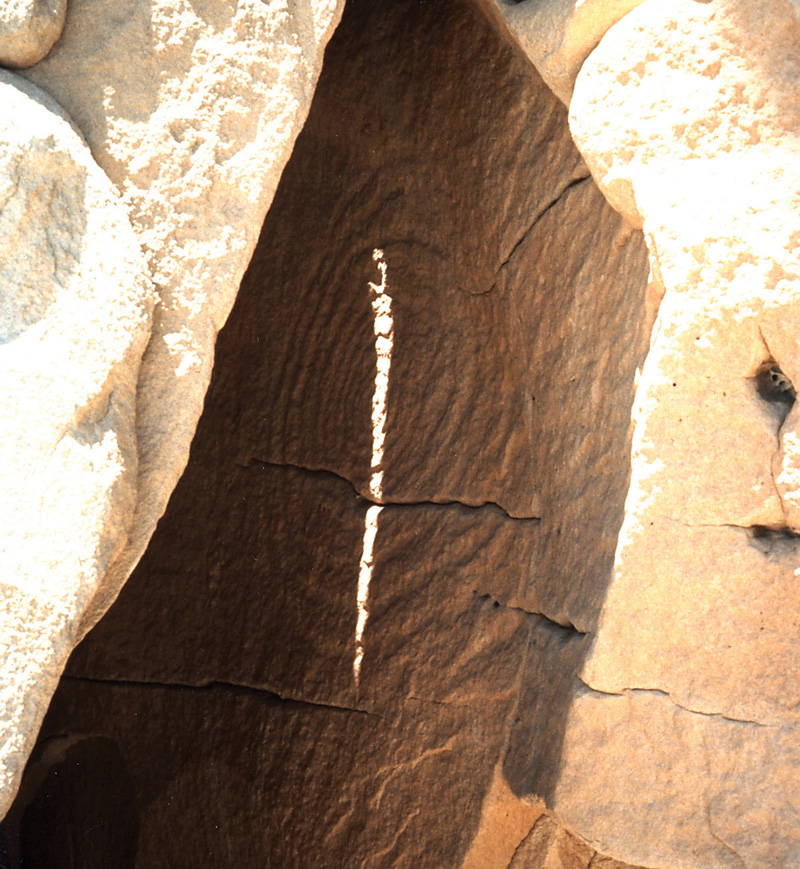2-1 Naked-eye astronomy had an important place in civilizations of the past
Positional astronomy—the study of the positions of objects in the sky and how these positions change—has roots that extend far back in time. Four to five thousand years ago, the inhabitants of the British Isles erected stone structures, such as Stonehenge, that suggest a preoccupation with the motions of the sky. Alignments of these stones appear to show the changing locations where the Sun rose and set at key times during the year. Stoneworks of a different sort but with a similar astronomical purpose are found in the Americas, from the southwestern United States to the Andes of Peru. The ancestral Puebloans (also called Anasazi) of modern-day New Mexico, Arizona, Utah, and Colorado created stone carvings that were illuminated by the Sun on the first days of summer or winter (Figure 2-1). At the Incan city of Machu Picchu in Peru, a narrow window carved in a rock 2 meters thick looks out on the sunrise only on December 21 each year. It is thought that the need to keep track of seasons for farming—to know when to sow seeds—provided at least one motivation for early astronomical alignments.

The Sun Dagger at Chaco Canyon On the first day of winter, rays of sunlight passing between stone slabs bracket a spiral stone carving, or petroglyph, at Chaco Canyon in New Mexico. A single band of light strikes the center of the spiral on the first day of summer. This astronomically aligned petroglyph and others were carved by the ancestral Puebloan culture between 850 and 1250 c.e.
The astronomical knowledge of ancient peoples is the foundation of modern astronomy
Other ancient peoples designed buildings with astronomical orientations. The great Egyptian pyramids, built around 3000 b.c.e., are oriented north-south and east-west with an accuracy much better than 1 degree. Similar alignments are found in the grand tomb of Shih Huang Ti (259 b.c.e.–210 b.c.e.), the first emperor of China.
Evidence of a highly sophisticated understanding of astronomy can be found in the written records of the Mayan civilization of Central America. Mayan astronomers deduced by observation that the apparent motions of the planet Venus follow a cycle that repeats every 584 days. They also developed a technique for calculating the position of Venus on different dates. The Maya believed that Venus was associated with war, so such calculations were important for choosing the most promising dates on which to attack an enemy.
These archaeological discoveries bear witness to an awareness of naked-eye astronomy by the peoples of many cultures. Many of the concepts of modern positional astronomy come to us from these ancients, including the idea of dividing the sky into constellations.